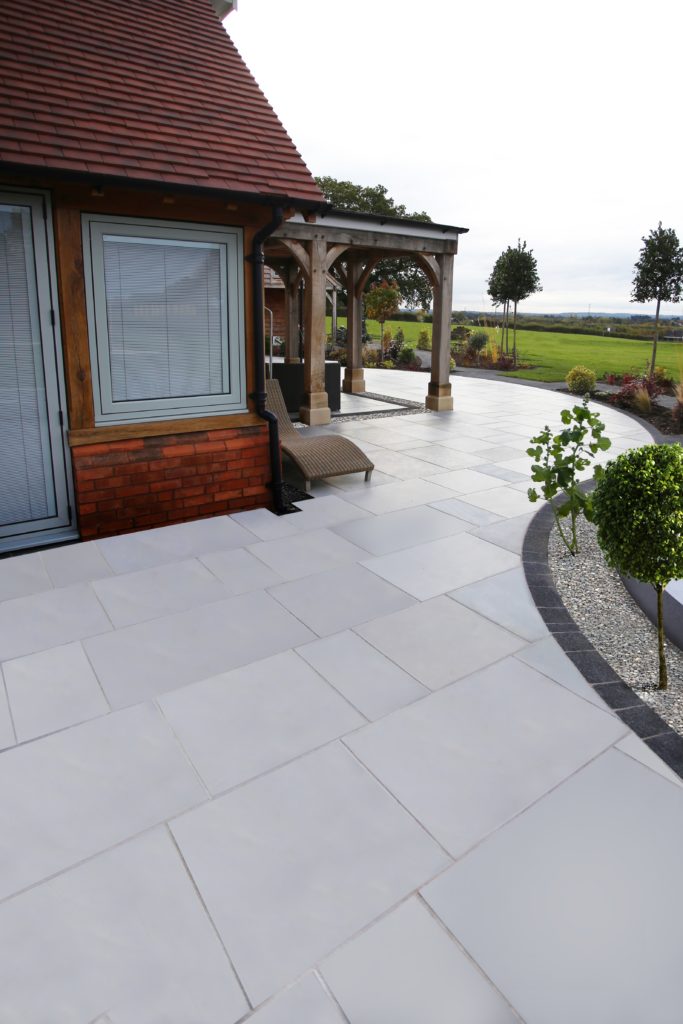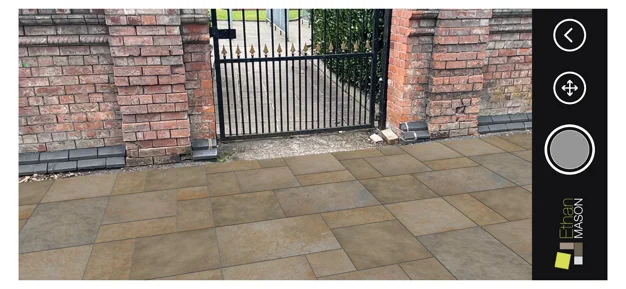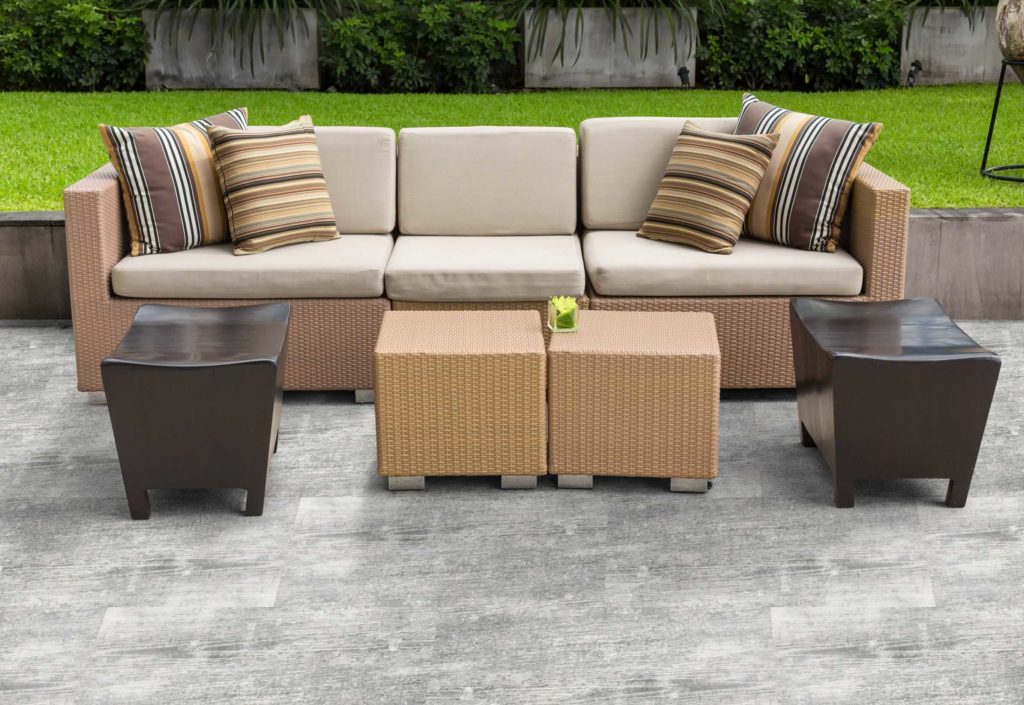Creating a garden that looks great and works for your pets is a fine balance. Dogs and cats love to explore, dig, and bask in the sun, so it’s essential to choose paving that caters to their needs. Whether it’s about ensuring your dog doesn’t slip while running, or making sure your cat’s paws aren’t burned on hot days, pet-friendly paving can be the perfect solution. In this guide, we’ll cover the best materials, design tips, and maintenance techniques to create a pet-safe and aesthetically pleasing outdoor space.
Why Pet-Friendly Paving Matters
Your garden is an extension of your home, and if you have pets, their comfort and safety should be a top priority. Just as some surfaces can be dangerous for humans, certain paving materials can pose risks to pets. Hot surfaces, slippery tiles, and rough textures are all things to consider when selecting the right paving. Not only can they affect your pet’s comfort, but the wrong paving choice could lead to injuries. Dogs and cats rely on their paws for traction and protection, so keeping their paws safe should be a key focus.

Paws and Temperature
Did you know that some paving materials can become scorching hot in the sun? In warmer months, concrete or dark paving stones can reach temperatures that may burn your dog’s paws. According to the American Kennel Club (AKC), if the pavement is too hot for your hand, it’s too hot for your dog’s paws . Light-colored paving materials like porcelain tiles or light sandstone can reflect sunlight, staying cooler and providing a more comfortable surface for your pets to walk on.
Paw Traction and Surface Texture
Dogs need a surface with good traction, especially if they love to run around the garden. Smooth materials, while visually appealing, can be slippery, particularly when wet. A textured surface like riven sandstone or non-slip porcelain is an excellent choice for active pets . These surfaces offer grip, reducing the risk of accidents.
Cleaning and Maintenance for Pet Urine
One of the biggest concerns with pets in the garden is how paving reacts to pet urine. Pet urine contains nitrogen and salts that can stain and damage porous surfaces like sandstone or limestone if not cleaned promptly. Non-porous materials, such as porcelain or sealed concrete, are more resistant to these effects, making them a better option for pet owners . Regular cleaning with pet-safe cleaners and sealing porous stones can help prevent damage and odors.
Choosing the Best Paving Material for Pets
Porcelain Paving
Porcelain is a fantastic option for pet-friendly gardens. It’s non-porous, meaning it won’t absorb pet urine, making it easy to clean. It’s also highly durable and resistant to scratches from claws, keeping it looking new for longer. While porcelain can sometimes be slippery when wet, many manufacturers offer non-slip finishes that provide better grip .
Concrete Pavers
Concrete is a versatile and affordable option. It can be textured for traction and is durable enough to withstand heavy use from pets. However, concrete can absorb liquids if not sealed, leading to stains from pet urine. Sealing the surface is essential to keep it protected. In warmer climates, concrete can also get very hot, so providing shaded areas for your pets is a must .
Natural Stone
Natural sandstone, like granite or slate, adds a timeless aesthetic to your garden. Harder stones such as granite are durable and less porous, making them more resistant to pet damage. Softer stones like sandstone are more prone to staining and will need regular maintenance, including sealing . Natural stone typically has a good texture for traction, reducing the risk of slips and falls for your pets.
Rubber Paving
Rubber paving is an emerging option for pet-friendly gardens. It’s soft underfoot, making it ideal for pets, particularly older animals with joint issues. Rubber paving is also slip-resistant and shock absorbent, reducing the risk of injury from falls. While it’s not the most visually appealing option, it’s one of the safest choices for paw health .
Design Tips for a Pet-Friendly Garden
Create Pathways for Your Pets
Designating pathways through your garden can help guide your pets and reduce wear and tear on grassy areas. These paths can be made from durable materials like stone or porcelain, keeping your pets from digging up garden beds . Wide, curved paths are both functional and aesthetically pleasing, encouraging natural movement around the garden without trampling delicate plants.
Provide Shaded Areas
On hot summer days, pets need a place to cool off. Including shaded areas in your garden—whether through planting trees, using pergolas, or setting up umbrellas—can help protect your pets from overheating. Shaded spots not only provide relief from the sun but also keep paving cool to the touch .
Safe Play Zones
Creating designated play areas is a fantastic way to make your garden even more pet-friendly. If your dog loves to dig, consider adding a sandbox or gravel section specifically for this purpose. These zones keep your dog occupied while protecting other areas of your garden. Incorporating sensory elements, such as pet-safe herbs like catnip for cats or lavender for dogs, can also create a stimulating environment for them to explore .
Avoid Toxic Plants
It’s essential to be mindful of the plants in your garden, as many common plants are toxic to pets. Lilies, daffodils, and azaleas are just a few examples of plants that can be harmful to cats and dogs . Opt for pet-safe plants and flowers to create a garden that is not only beautiful but also safe for your furry friends.
Maintaining Your Pet-Friendly Paving
Once you’ve chosen the right materials, maintaining your pet-friendly garden is key. Regular cleaning is important, especially in areas where your pets frequently urinate. Use a hose or pressure washer to remove dirt, hair, and other debris from the surface. If your paving is porous, resealing it every few years will help protect it from stains and wear.
For any pet accidents, enzymatic cleaners designed to break down urine proteins are your best option. These cleaners not only eliminate stains but also remove odors, preventing your pets from marking the same spot repeatedly.
Seasonal Considerations
In the summer, be cautious of hot surfaces. As mentioned earlier, certain paving materials can heat up quickly under direct sunlight, posing a risk to your pet’s paws. Always check the temperature of the paving before letting your pets outside. In colder months, slippery surfaces can become dangerous, so ensure you clear ice and snow from pathways to keep your pets safe. Pet-safe de-icing products are a great alternative to traditional salts, which can harm your pets’ paws.

Conclusion: Balancing Beauty and Functionality
A pet-friendly garden doesn’t mean you have to compromise on beauty. By choosing the right paving materials and incorporating thoughtful design elements, you can create a space that is both functional and visually stunning. Whether it’s cool porcelain tiles for hot summer days or textured stone to provide traction, your pets will appreciate the comfort and safety. In return, you’ll have a low-maintenance garden that the whole family—pets included—can enjoy.
References
- American Kennel Club – How Hot Is Too Hot for Dog Paws?
- Paving Shopper – Pet-Friendly Paving: What is the Best Paving for a Dog-Friendly Garden?
- Paving Superstore – Creating a Dog-Friendly Garden
- Pet MD – Why You Should Be Cleaning Your Dog’s Paws After a Walk
- Porcelain Paving: The Best Choice for Pet Owners
- Concrete Network – How to Design a Dog-Friendly Garden
- London Stone – Designing a Pet-Friendly Garden
- Rubber Flooring Direct – Benefits of Rubber Paving for Pet-Friendly Gardens
- Garden Ninja – Dog-Friendly Garden Design
- Vet Practice News – Protecting Your Pet in the Garden
- ASPCA – Toxic and Non-Toxic Plants
- Pet Forums – Best Garden Surfaces for Dogs

